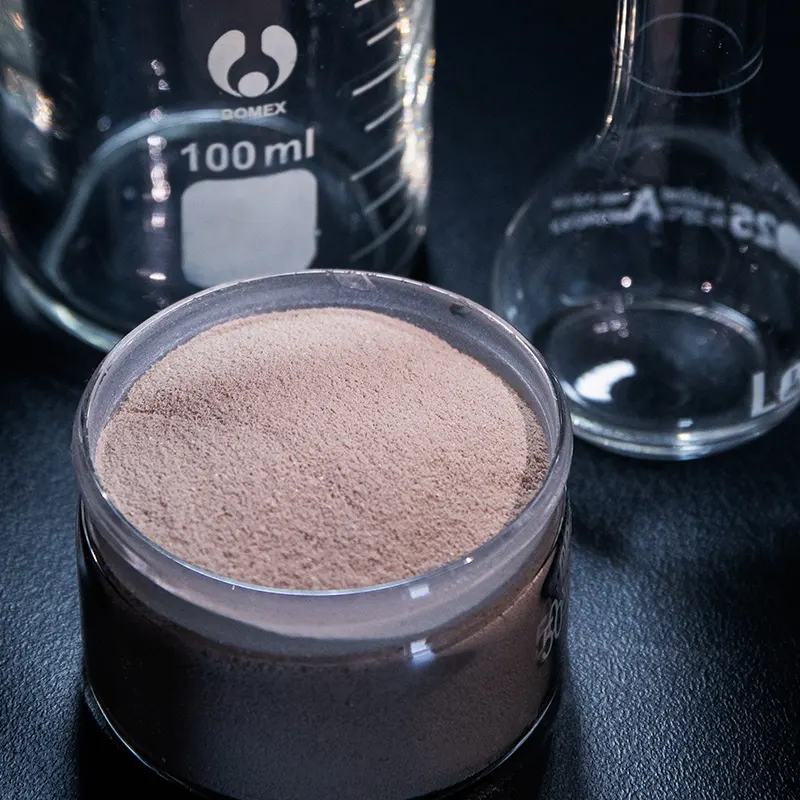Preserving Reagent Integrity in Synthetic Chemistry
Carbonyldiimidazole, commonly known as CDI, is a valuable reagent in organic synthesis, particularly for amide bond formation. Its popularity stems from its efficiency, broad compatibility with functional groups, and clean reaction by-products. However, like many chemical reagents, CDI is sensitive to environmental factors. Proper storage and handling of CDI are crucial to ensure optimal reactivity, maintain purity, and prevent degradation that could compromise synthetic outcomes.
Understanding the physical and chemical characteristics of CDI allows chemists to make informed decisions about storage conditions, handling procedures, and usage timing. When CDI is managed properly, it delivers consistent performance across a wide range of applications, from small-scale laboratory research to large-scale industrial synthesis.
Environmental Factors Influencing CDI Stability
Sensitivity to Moisture and Hydrolysis
One of the most critical factors affecting the stability of CDI is its sensitivity to moisture. CDI readily reacts with water to form imidazole and carbon dioxide, effectively neutralizing its coupling capacity. Even trace amounts of water in the storage environment or solvent system can initiate this unwanted hydrolysis.
To avoid this, CDI should be stored in tightly sealed containers with desiccants to absorb any ambient moisture. Using an inert atmosphere such as nitrogen or argon in storage or during weighing further minimizes exposure to water vapor. In high-humidity environments, refrigerated or controlled-atmosphere storage is recommended.
Impact of Temperature and Light
Temperature fluctuations and exposure to light can also influence the stability of CDI. While CDI is relatively stable at room temperature under dry conditions, prolonged exposure to heat or UV light may initiate degradation. Avoid storing CDI near heat sources, windows, or in laboratories without climate control.
For long-term storage, keeping CDI in a cool, dark, and dry environment preserves its potency. Refrigeration is not always necessary but may be beneficial in warmer climates. If refrigerated, CDI should be equilibrated to room temperature before opening to prevent condensation and moisture intrusion.

Best Practices for Storage and Shelf Life
Ideal Storage Containers and Packaging
CDI is typically supplied in moisture-proof packaging such as amber glass bottles or foil-sealed containers. Upon opening, transferring CDI to an airtight, resealable container with a built-in desiccant helps maintain dryness. Amber bottles also offer protection from light, further preserving the reagent.
Labeling the storage container with the date of opening and expiration estimate can aid in inventory management. Some chemists also divide CDI into single-use portions under inert atmosphere to reduce repeated exposure to air and humidity.
Shelf Life and Signs of Degradation
Under ideal storage conditions, CDI can remain stable for several months to years. However, monitoring for signs of degradation is important to ensure effective coupling reactions. Discoloration, clumping, or the presence of a strong odor may indicate moisture uptake or breakdown.
Before use, it is advisable to inspect the physical appearance and confirm the expected melting point or perform a small-scale test reaction. If the reagent shows signs of reduced activity, it should be replaced to avoid compromising reaction efficiency.
Safe and Efficient Handling Procedures
Personal Protective Equipment and Laboratory Setup
Although CDI is not classified as highly hazardous, standard personal protective equipment (PPE) is essential. This includes lab coats, gloves, and safety goggles. Working in a fume hood is recommended to avoid inhalation of fine particles, particularly when transferring powder forms.
Laboratory equipment used with CDI should be thoroughly dry. Using oven-dried glassware and freshly distilled or anhydrous solvents helps prevent hydrolysis during reaction setup. Setting up the reaction under an inert gas atmosphere adds an extra layer of protection against moisture.
Weighing and Transferring Techniques
Weighing CDI should be performed quickly and efficiently to limit exposure to ambient air. Using a glovebox or glovebag is ideal for sensitive applications, but rapid weighing in a dry-box or under nitrogen can also be sufficient. Avoid scooping CDI from its original container using metal spatulas, which may introduce contaminants or moisture.
Transferring CDI into the reaction vessel should be done immediately after weighing. Sealing the reaction vessel quickly ensures that atmospheric moisture does not interfere with the activation process. Minimizing transfer time helps preserve the reactive integrity of CDI.
Practical Considerations in Reaction Setup
Preparing Reactants and Solvents
To ensure CDI performs optimally, reactants should be dried or purified before use. Carboxylic acids and amines with high water content may reduce the effectiveness of the coupling reaction. Drying agents such as molecular sieves can be used in solvents prior to the reaction to eliminate trace moisture.
Solvents should be chosen based on compatibility with CDI and the desired reaction mechanism. Common solvents like DMF, DMSO, or THF are effective, provided they are dry and oxygen-free. Commercially available anhydrous solvents can streamline the preparation process.
Monitoring and Adjusting Reaction Conditions
Once CDI is added to the reaction, temperature, and time should be closely monitored. Most CDI-mediated reactions proceed well at room temperature, but slight heating may be required for less reactive substrates. Maintaining a sealed reaction environment ensures moisture does not infiltrate the system during the course of the reaction.
Using inert gas blankets or sealing with septa can prevent external contamination. Analytical tools like TLC or NMR can be employed to monitor reaction progress. Completing the reaction in a timely manner prevents prolonged exposure of CDI to the reaction medium, reducing the risk of decomposition.
Disposal and Environmental Safety
Managing Waste By-Products
The primary by-products of CDI reactions are imidazole and carbon dioxide, both of which are relatively benign. Imidazole can often be removed via aqueous washing, while carbon dioxide escapes as a gas. Any unreacted CDI should be treated with caution and neutralized in a controlled manner.
Avoid disposing of CDI waste down the drain or in open trash. Collecting solid and liquid waste in designated containers ensures proper disposal according to institutional and environmental regulations.
Minimizing Exposure and Contamination
Spills of CDI powder should be cleaned immediately using a damp cloth or appropriate solvent while wearing PPE. Avoid sweeping or creating dust clouds, which may result in airborne particles. Contaminated surfaces and tools should be wiped down with a dry or solvent-dampened cloth and allowed to dry completely before reuse.
Limiting the number of people handling CDI and clearly labeling storage areas can also help reduce the risk of misuse. Proper training for laboratory personnel enhances safety and ensures best practices are followed consistently.
Applications That Benefit from Proper CDI Handling
Peptide Synthesis and Pharmaceutical Research
Many peptide synthesis protocols rely on CDI due to its compatibility with amino acids and mild activation conditions. Proper storage and handling ensure that CDI functions optimally in forming peptide bonds without racemization or degradation.
In pharmaceutical research, where compound integrity is paramount, maintaining CDI activity through proper handling ensures that target molecules are synthesized with high fidelity and reproducibility.
Industrial and High-Throughput Processes
In large-scale or automated environments, where reactions are carried out in sequence or repeated frequently, the stability of CDI becomes even more important. Batch-to-batch consistency and reliable performance reduce costs and production downtime.
Automated liquid handling systems can be configured to dispense pre-weighed CDI portions under inert conditions, minimizing human error and maintaining reagent quality across multiple runs.
Frequently Asked Questions
How long can CDI be stored after opening?
When stored in an airtight container with desiccant and kept in a cool, dry place, CDI can remain effective for several months to over a year. Always inspect before use.
What is the best way to weigh CDI without moisture contamination?
Use a dry box, glovebox, or work quickly under a nitrogen atmosphere. Avoid using damp tools or open-air environments.
Can CDI be refrigerated for long-term storage?
Yes, refrigeration is beneficial in humid environments but is not mandatory if dry, cool storage is available. Let CDI come to room temperature before opening.
What precautions should be taken when using CDI in scale-up reactions?
Ensure all solvents and reagents are dry, use inert atmospheres, and monitor reaction time and temperature closely. Proper storage and handling are critical to prevent waste and ensure reproducibility.
Table of Contents
- Preserving Reagent Integrity in Synthetic Chemistry
- Environmental Factors Influencing CDI Stability
- Best Practices for Storage and Shelf Life
- Safe and Efficient Handling Procedures
- Practical Considerations in Reaction Setup
- Disposal and Environmental Safety
- Applications That Benefit from Proper CDI Handling
- Frequently Asked Questions

